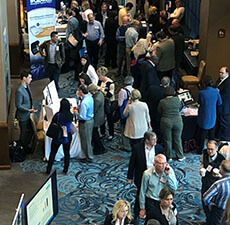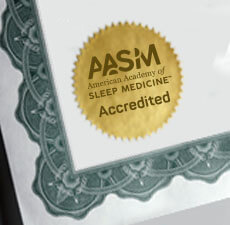Talking Sleep Season 4
Episode 18
Spotlighting Central Sleep Apnea
Dr. Safwan Badr, GUEST
 Central sleep apnea is often misunderstood. In today’s episode, we talk with Dr. Safwan Badr about this complex sleep-related breathing disorder, its similarities to obstructive sleep apnea, and the many pathways from which central apnea develops. Dr. Badr also discusses a variety of treatment options for central sleep apnea, including CPAP, and explains why it can be effective.
Central sleep apnea is often misunderstood. In today’s episode, we talk with Dr. Safwan Badr about this complex sleep-related breathing disorder, its similarities to obstructive sleep apnea, and the many pathways from which central apnea develops. Dr. Badr also discusses a variety of treatment options for central sleep apnea, including CPAP, and explains why it can be effective.
Safwan Badr, MD, MBA, is a past president of the AASM and currently serves on the board of directors of the American Board of Internal Medicine. He is professor and chair of internal medicine at the Wayne State University School of Medicine and a staff physician at the John D. Dingell VA Medical Center in Detroit.
Episode Resources
- Central Sleep Apnea: a Brief Review
- Interaction of sleep state and chemical stimuli in sustaining rhythmic ventilation
- Reversal of central sleep apnea using nasal CPAP
- Pathogenesis of apneas in hypersomnia-sleep apnea syndrome
- Changes in inspiratory muscle electrical activity and upper airway resistance during periodic breathing induced by hypoxia during sleep
- Effect of hypoxia-induced periodic breathing on upper airway obstruction during sleep
- Treatment with leuprolide acetate decreases the threshold of the ventilatory response to carbon dioxide in healthy males
- Effect of testosterone on the apneic threshold in women during NREM sleep
- Effect of gender on the development of hypocapnic apnea/hypopnea during NREM sleep
- The determinants of the apnea threshold during NREM sleep in normal subjects
- Treatment of central sleep apnea in U.S. veterans
- Increased propensity for central apnea in patients with obstructive sleep apnea: effect of nasal continuous positive airway pressure
- Expiratory pharyngeal narrowing during central hypocapnic hypopnea
- Acetazolamide improves central sleep apnea in heart failure: a double-blind, prospective study
- Acetazolamide attenuates Hunter-Cheyne-Stokes breathing but augments the hypercapnic ventilatory response in patients with heart failure
- Aging is associated with increased propensity for central apnea during NREM sleep
- Treatment-Emergent Central Apnea: Physiologic Mechanisms Informing Clinical Practice





